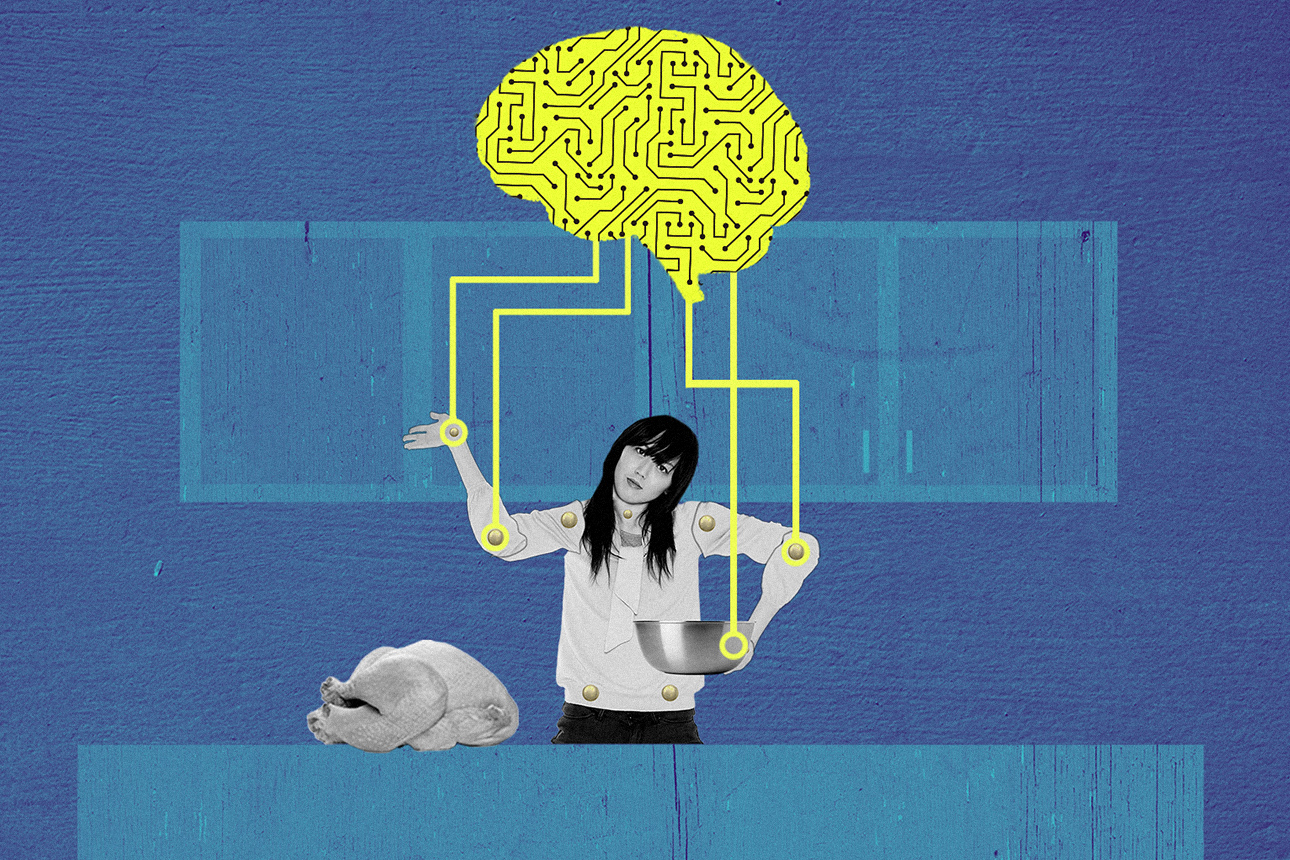Smart Product Breakthroughs Depend on Customer Control
Research shows that customers want the functional benefits of smart products without sacrificing autonomy and privacy.
Topics
News
- Private Sector to Outpace Governments in $20 Billion Earth Intelligence Market
- Saudi Arabia to Add 112MW to Data Centre Capacity in New Deal
- UAE Dominates Global Data Centre Rankings as Region Becomes Digital Infrastructure Hotspot
- AI Adoption Climbs 233% Globally with the Middle East Showing Similar Momentum, Report finds
- du Launches UAE’s First Sovereign Hypercloud for Government and AI Innovation
- Ooredoo Launches Sovereign AI Cloud in Qatar Powered by Nvidia GPUs

For centuries, writers and storytellers have imagined fantastic stories about autonomous robots and artificial intelligence. Today, what was once fantasy has become reality. Smart products, such as robotic vacuum cleaners and smart speakers, populate our everyday lives. They act completely on their own, without the need for humans to intervene.
In Greek myths and Hollywood movies alike, whenever such robots take control, it often ends in disaster. The robots wreak havoc and oppress humans. Influenced by this dystopian vision, many people are suspicious of and feel threatened by the reach of advanced technology — such as the friend who stops wearing a smartwatch after growing tired of its constant nudges, or the driver of an autonomous car who is reluctant to let go of the steering wheel. Both examples illustrate concern over losing control — a reasonable concern, given that humans have an innate desire for control.
From a business perspective, consumer fear of losing control hinders smart-product adoption and use. In our work, we aim to provide guidance to managers on how to design and market smart products with customer control in mind. We do so by answering the following question: How can managers help customers restore control over their smart products?
To address it, we teamed up with a home appliance manufacturer and a nonprofit organization to conduct a representative survey among 1,007 people living in Western Europe on their use and perception of smart products. We found that convenience and time savings with smart products are valued, but the accompanying loss of control — a factor that is often overlooked — looms so large that it impairs adoption and satisfaction.
In this article, we examine three aspects of customer control and provide effective strategies to restore it based on multiple research projects: first, how smart products take away control from consumers; second, how fostering social relationships between customers and smart products remedies the loss of control; and finally, the relevance of an overlooked smart-product feature — their ability to move on their own — in customer perception and adoption.
Safeguarding a Meaningful and Sovereign Life With Smart Products
In our survey, respondents indicated two key elements of control they fear losing: control over their lives in general as they become overly reliant on smart products, and control over their data.
People fear becoming overly reliant on smart products because of the potential for losing knowledge and essential skills, such as how to cook, clean, or even think. In a series of follow-up experiments, we determined that specific tasks — depending on what they mean to certain consumers — can exacerbate control concerns, with detrimental consequences for product adoption and use.
Delegating to smart products is considered especially undesirable for tasks that people identify with. Think of driving enthusiasts being asked to give up driving. These tasks are core to one’s self-expression, and relinquishing control means giving up part of one’s identity. Consumers also dislike giving up manual tasks that add meaning to life, such as cooking or lawn care. For certain consumers, this can even hold true for mundane activities such as vacuuming. Delegating these chores to machines equals a loss of meaning for them.
Further, according to our research, a perceived lack of data control is a strong drawback of smart products for customers, even more so than their hefty price tags or flawed reliability. Poor transparency in data practices, coupled with privacy abuses in the tech industry, underlie this concern. Notably, letting smart products into our homes means integrating them into our lives and sharing our most private spaces. Consumers demand to know what they are sharing with whom and why. They strongly expect to have the final say on their privacy.
To build customer control over smart products, companies can ask the following question: Does our smart product take over any tasks that a certain segment of our customers derives identity or meaning from? If so, identify the task and customer segment — take cooking enthusiasts, for instance — and give them back control by involving them in task achievement by adding a manual step to the automated cooking process, such as seasoning the food.
Alternatively, smart-product companies can highlight that the time saved with these products can be used in more meaningful ways (such as spending more time around the dinner table enjoying the meal with family). Vorwerk, the manufacturer of the smart kitchen device Thermomix, which can autonomously prepare entire meals for the customer, exemplifies this best practice in its ads. The company highlights that the device is a customer’s own “assistant in the kitchen” and leaves them with more time for other things they love doing.
It’s important to prioritize customer autonomy with smart products by vetting what data practices are applied in the product’s operation. Customers know that smart products collect data. Still, they are frequently left in the dark about which data is collected and for what reason. Companies can restore data control by providing transparent information about products and allowing customers to protect their privacy, such as by disabling sensitive voice- and image-capture technology in the product settings. These options can be integrated directly into the messaging to customers. For example, Swiss startup Sevensense Robotics directly assures customers on its website that it doesn’t store camera images and that sensitive data will not be transferred into the cloud.
Facilitating Social Relationships With Smart Products
The research also shows that customers build relationships with smart products. This is due to the products’ humanlike features, such as voice or motion capabilities, that encourage social interaction. Autonomy is another humanlike product feature — one that is crucial to the product’s ability to operate independently. But autonomy is also crucial for the customer, who is seeking to exert control over the product.
Three studies that we conducted revealed that in smart-product relationships, not unlike human relationships, most people see autonomy and control as a zero-sum proposition: “When a smart product gains autonomy, I automatically lose it.”
Further, take the practice of nicknaming. We found that it is often not just any robot that is vacuuming the floor, but “Dustin Bieber.” Surveying the customer base of a major European home appliance manufacturer, around 30% of the over 8,000 surveyed customers had nicknamed their smart kitchen machine. In three tightly controlled experiments, we showed that nicknaming gives control back to customers across different smart-product categories: It connotes power over a product’s identity and verbal integration into one’s life.
As a manager, don’t stop at conveying your smart product’s functional benefits — focus on the evolving win-win relationship. For example, instead of promoting your smart kitchen device as taking over a customer’s regular cooking habits, present it as a means of expanding their culinary diversity. Moley Robotics, a manufacturer of smart kitchens, does exactly that by highlighting that its customers gain an opportunity to eat more healthily and creatively.
Brands can also play into customers’ fondness for nicknaming smart products by using social media, influencers, and other marketing strategies to inspire creativity and support more Dustin Biebers in their customer base. A small, pioneering group of companies, including iRobot, is already actively encouraging nicknaming in their mobile apps.
Creating a Customer-Centric Motion Experience
Motion plays an important role in how humans perceive control of smart products, which are the first consumer products to be self-moving. Here, motion is more than window dressing: It’s behavior. Two experiments with over 500 business students from a major European university revealed that smart products that move autonomously reduce people’s perceived control compared with stationary smart products.
The exact motion of smart products is determined by one of several different algorithms. Consider a robotic lawn mower in your backyard. It could follow a random or systematic path, a user-programmed or more complex AI-driven pattern. We discovered that motion predictability — the degree to which a smart product moves as expected — is related to control perceptions. Systematic and thus predictable motion patterns (such as zigzagging) increase perceived control compared with random motion and the likelihood that a consumer will adopt and use the product.
Based on these insights, we suggest mindfully designing smart-product motion by going beyond technical specifications and taking a customer-centric perspective. Answering the following questions can help determine how to preserve user control: What motion behavior best serves the intended use case? Are there motion patterns familiar to customers’ natural environment, such as wriggling or rolling, that could satisfy or harm desired outcomes? Is the motion predictable, confusing, or even threatening (such as a vacuum cleaner that seems to be sneaking around corners)?
Experiencing predictable and smooth motion patterns may help customers to regain control and integrate a moving smart product into their lives. On its website, Ecovacs Robotics shows its Winbot (a robotic window cleaner) following a smooth and predictable zigzag pattern. Other practical solutions include app interfaces that customers can use to map out product movements. This enables the assignment of no-go areas for robotic vacuum cleaners or lawn mowers, handing control back to humans.
From adoption to satisfaction, requiring customers to relinquish control hampers smart products’ market success. Managers in this field mainly focus on adoption barriers like functionality and price but must understand that customer control plays an important role in developing the full potential of their products. Customers want the benefits of smart products but don’t want to cede all of their autonomy and privacy to machines. Companies and managers can innovate at the smart frontier by involving customers in the experience and designing smart products in a customer-centric way to restore customer control.





